Research progress in titanium nitride thin films
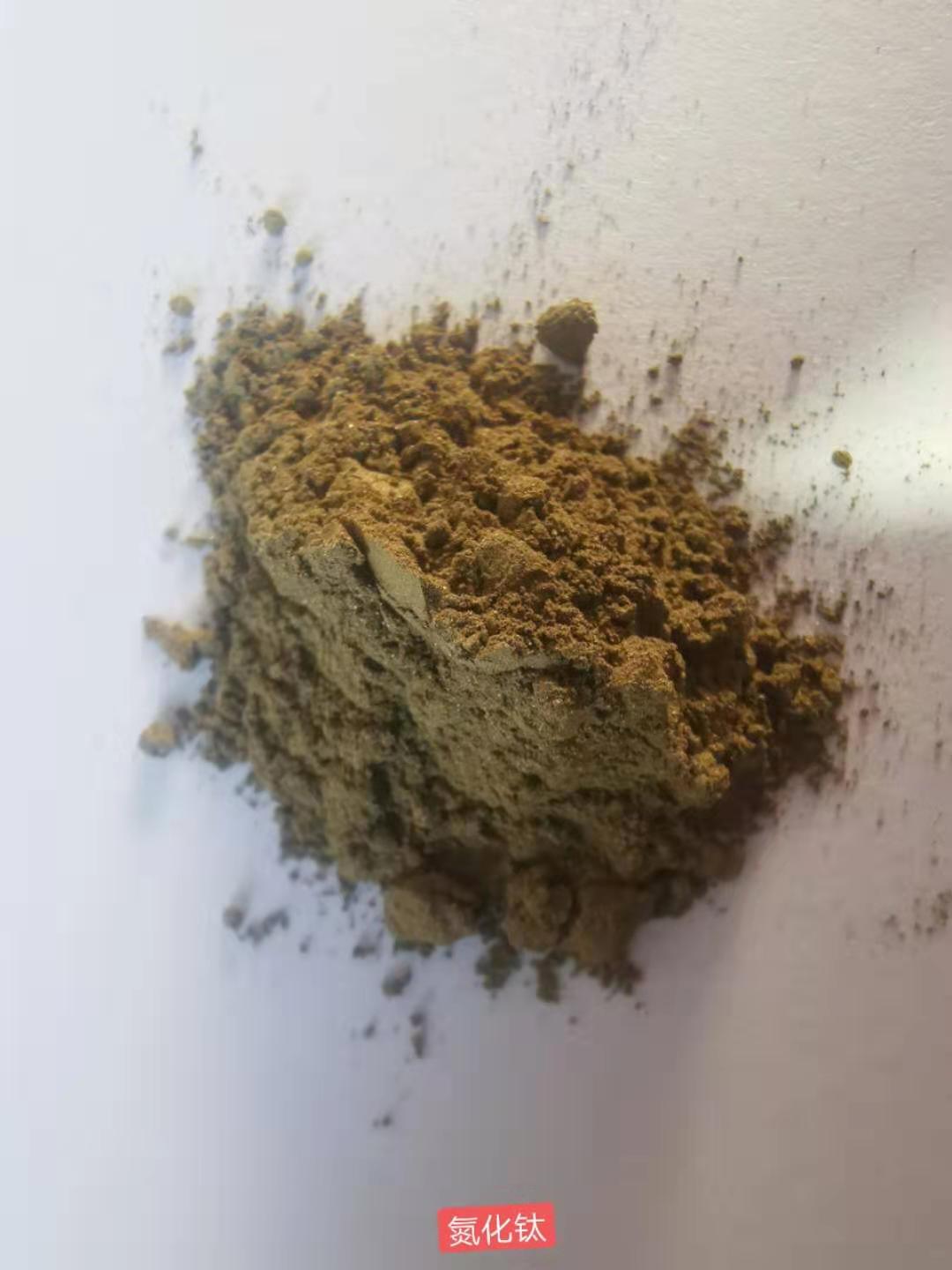
1. Introduction to Thin Film Materials
The development of advanced technologies such as high-speed cutting and dry cutting in the manufacturing industry has put forward high requirements for cutting tools. As a thin film material for tool coating, TiN should not only have high hardness, but also excellent wear resistance, heat resistance, toughness, and good chemical stability. The surface coating of hard films can meet the above requirements. Hard film surface coating usually refers to the film layer applied to the surface of components to improve their wear resistance, corrosion resistance, and high temperature resistance. The thickness ranges from a few nanometers to several tens of micrometers, and the material is usually some intermetallic compounds composed of transition metals and non-metals. These compounds are generally composed of metal bonds, covalent bonds, ionic bonds, as well as mixed bonds of ionic and metal bonds. They have high melting points, high hardness, and usually have good chemical and thermal stability. Based on the above characteristics and advantages, hard film surface coatings have been widely used in processing fields such as aviation, military industry, electronics, etc., and have effectively promoted the development of manufacturing industry in areas such as cutting tools and molds.
Titanium nitride is the first industrialized and widely used hard thin film material. Titanium nitride thin film has characteristics such as high hardness, wear resistance, heat resistance, and corrosion resistance. It is a face centered cubic crystal structure composed of a mixture of metal bonds, covalent bonds, and ionic bonds. It also has the characteristics of both metal and covalent crystals and belongs to the interstitial phase. Its melting point is as high as 2955 , elastic modulus is 616 GPa, Vickers hardness is 2245, high temperature strength, and good thermal conductivity. As an ideal coating material for metal cutting tools, the preparation technology of titanium nitride thin films has become a current research hotspot. Titanium nitride, aluminum titanium nitride, aluminum titanium nitride, and some nano superlattice composite films are all studied based on titanium nitride.
With the development of nanotechnology, the application of small size effects, surface effects, and quantum tunneling effects of nanomaterials can be combined with traditional surface technologies to prepare nano multilayer films with better performance. Nano multilayer thin films have high hardness due to the superhard effect, and can be tailored due to the diversity of material combinations, making them have broad application prospects in the field of tool coatings. This type of material obtains a high hardness strengthening mechanism through artificial microstructure design, which has theoretical research value.
Research has found that adding precious metal element silver can effectively improve the high-temperature wear performance of thin films. The lubricating effect of soft precious metals such as silver is outstanding, with characteristics such as low cutting strength and stable physical and chemical properties. Due to the above characteristics of silver, silver can be mixed into hard film materials as a lubricant to improve the wear performance of the film at various temperatures.
2 Thin film preparation technology
Thin film preparation often uses vapor deposition technology, mainly including chemical vapor deposition and physical vapor deposition. Chemical vapor deposition includes traditional chemical vapor deposition, laser chemical vapor deposition, photochemical vapor deposition, plasma enhanced chemical vapor deposition, etc. It can accurately control the composition of thin films and make them have ideal chemical ratios. Using chemical vapor deposition, the deposition rate is fast, and the prepared thin film has good adhesion to the substrate, with low cost, suitable for industrial production. However, due to the fact that thin films are prepared through chemical reactions, there are certain limitations in the selection of deposition materials. Due to the fact that the chemical reactions during the preparation process mainly rely on thermal effects, the substrate must be a high melting point material, so the selection of substrate materials also has certain limitations. On the other hand, the deposition process of chemical vapor deposition is relatively complex, with many controllable variables, poor repeatability, and difficult operation.
Compared with chemical vapor deposition, physical vapor deposition requires lower temperatures in the process of preparing thin films, even at room temperature. Therefore, there are no restrictions on the selection of deposition materials and substrate materials, effectively overcoming the limitations of chemical vapor deposition. Physical vapor deposition first appeared in the 1970s. The particles emitted from raw materials condense, nucleate, grow, and form films upon reaching the substrate. The entire process does not involve chemical reactions, only phase changes. According to the different ways of particle emission during the deposition process, physical vapor deposition can currently be divided into several categories: evaporation coating, sputtering coating, ion coating, and epitaxial film deposition. Among them, magnetron sputtering has become one of the most widely used and rapidly developing technologies in sputtering coating technology.
Magnetron sputtering uses a direct current or high-frequency electric field to ionize inert gases and generate glow discharge plasma. The positive ions and electrons generated by ionization bombard the target material at high speed, causing atoms or molecules on the target material to sputter out and then deposit onto the substrate to form a thin film.
Magnetron sputtering is a physical process in which the target material does not undergo phase transition during sputtering coating. Even if a compound thin film is formed, its composition is not easily changed, making it a widely used film material. Any material that can be made into a target material can achieve sputtering. Even high melting point materials can be sputtered.
Sputtered particles are mainly atoms and small amounts of ions, with an average energy of about 10 eV or higher. Therefore, when sputtered particles deposit on the surface of the substrate, there is still enough energy to cause particle migration, forming a dense and smooth thin film on the surface. Due to the cleaning and heating effects of particles on the substrate during sputtering, the thin film obtained by sputtering binds well with the substrate.
The thin film obtained by magnetron sputtering has the characteristics of high density, few pinholes, and high purity.
The magnetron sputtering process has good repeatability, controllable film thickness, easy automation of process control, and can obtain uniformly thick films on large-area substrates.
3 Film characterization
After preparing the thin film, various properties of the film can be obtained by testing and analyzing its thickness, composition, surface morphology, crystal structure, and other physical properties, thereby obtaining the optimal preparation process. The characterization of thin films plays a very important role in the research of thin film materials.
3.1 Structure
X-ray diffraction is an effective non-destructive method for measuring crystal structure. Through this method, the structure of molecules in crystals can be understood, and the composition of crystal materials, the existence status of various elements, and grain size can be measured. The crystal structure of titanium nitride is shown in Figure 1. Titanium nitride crystals belong to a typical sodium chloride type structure, with a face centered cubic lattice and a lattice constant of 0.423 9nm. Titanium nitride belongs to the interstitial phase, and the bonding between atoms is a mixed bond of covalent, metallic, and ionic bonds.
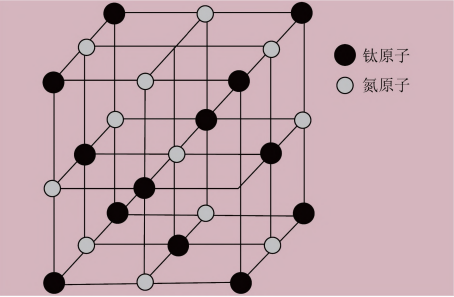
Figure 1 Crystal Structure of Titanium Nitride
3.2 Surface morphology
Scanning electron microscopy can be used to observe the surface morphology of thin films, detect the size of surface particles, uniformity of the film, and surface impurities, thereby evaluating the quality of the film.
3.3 Thickness
For multi-layer structured films, the thickness of the film directly affects various properties of the film. There are three different definitions of film thickness: Shape film thickness, which is the directly measured film thickness; The thickness of the quality film is measured in the form of mass and expressed in the form of thickness Physical property film thickness refers to the equivalent thickness of a whole material with the same physical properties as the film and the same size as the film. For the measurement of shape film thickness, there are methods such as step gauge method and multi beam interference method, among which the step gauge method has the highest measurement accuracy. For measuring the thickness of the quality film, there are methods such as microbalance weighing, quartz oscillation method, colorimetric method, etc. For the thickness of physical films, there are measurement methods such as resistance method, capacitance method, and polarized light analysis method.
3.4 Wear and tear
Comprehensive testing of the wear performance of thin film samples using a wear testing machine. After computer processing, the variation curve of the friction coefficient of the thin film sample with the test time and the average friction coefficient of the entire test process can be directly obtained. By conducting experiments and combining the morphology of wear marks, the wear products of the thin film are analyzed to achieve a comprehensive evaluation of the wear performance.
4. Properties of titanium nitride thin films
4.1 Microhardness Microhardness is one of the most important mechanical properties of titanium nitride thin films, which characterizes the ability of titanium nitride thin films to resist external forces and has a significant impact on the service life of titanium nitride thin films. Titanium nitride thin films usually have high hardness. Data shows that after coating with titanium nitride thin films, the microhardness of Ti6A14V can reach 3.5 times the original, and the hardness improvement is very significant.
In the sputtering process parameters of titanium nitride thin films, nitrogen flow rate, bias voltage, and sputtering power are the most important factors affecting the microhardness of titanium oxide thin films. There are five main reasons why titanium nitride thin films have high hardness.
Firstly, when the nitrogen content is high, it becomes a titanium deficient solid solution, and titanium nitride exhibits more of the high hardness characteristics of covalent compounds.
Secondly, the interior of titanium nitride crystals contains high hardness titanium nitride phases.
Thirdly, the nitrogen flow rate has a significant impact on the properties of titanium nitride thin films. With the increase of nitrogen flow rate, the microhardness of titanium nitride thin films increases sharply. When the nitrogen flow rate is 15 mL/s, the microhardness of titanium nitride thin films reaches the highest value, and then the microhardness of titanium nitride thin films gradually decreases. The influence curve of nitrogen flow rate on the microhardness of titanium nitride thin films is shown in Figure 2.
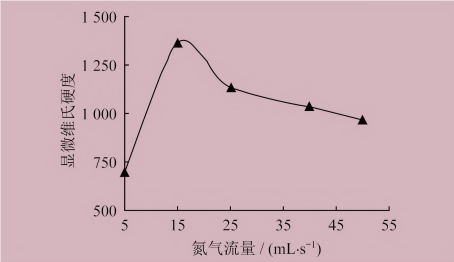
Figure 2 Effect curve of nitrogen flow rate on microhardness of titanium nitride thin films
Fourthly, ion bombardment has a significant impact on the formation of titanium nitride films. Applying appropriate negative bias voltage can reduce impurities and defects in titanium nitride films, optimize film structure and surface morphology. Appropriate negative bias voltage is also conducive to the formation of titanium nitrogen saturation bonds. The influence curve of negative bias on the microhardness of titanium nitride thin films is shown in Figure 3. Under unbiased voltage, the microhardness of titanium nitride thin films is relatively low. After adding negative bias voltage, the microhardness of titanium nitride film increases due to the bombardment of ions. When the negative bias voltage exceeds 80 V, as the negative bias voltage increases, the microhardness of the titanium nitride film actually decreases.
Fifth, appropriate sputtering power is beneficial for improving the hardness of titanium nitride thin films. With the increase of sputtering power, the number of titanium ions bombarded on the target material increases. Under a constant nitrogen flow rate, the probability of titanium ion and nitrogen ion binding is increased. The ratio of nitrogen to titanium ions in the titanium nitride film is closer to 1, and there are more saturated bonds and fewer defects in the titanium nitride film. The hardness of the titanium nitride film is higher. The microhardness of titanium nitride thin films under different sputtering powers is shown in Figure 4. As the sputtering power increases, the microhardness of titanium nitride thin films gradually increases. When the sputtering power reaches 300 W, the microhardness of the titanium nitride film reaches its maximum value. After the sputtering power is increased to a certain extent, no matter how much energy the incident ions have, they cannot be transferred to the sputtered atoms, because the energy loss of the incident ions inside the target material will also increase. This not only does not benefit the improvement of the performance of titanium nitride films, but also increases the content of titanium elements in the titanium nitride films, leading to a decrease in the microhardness of the titanium nitride films. Clearly, the sputtering power cannot be too high.
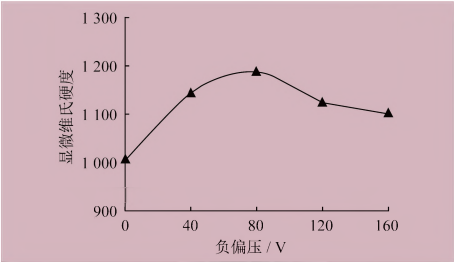
Figure 3 Effect curve of negative bias voltage on microhardness of titanium nitride thin films
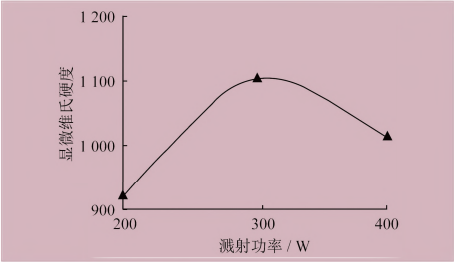
Figure 4 Microhardness of titanium nitride thin films under different sputtering powers
4.2 Wear resistance performance
Due to its excellent wear resistance, titanium nitride thin films are widely used in mechanical processing, high-temperature materials, and tool manufacturing industries. The titanium nitride phase exhibits good wear resistance at different temperatures, resulting in higher average friction coefficients for titanium nitride films at different environmental temperatures. The titanium oxide in titanium nitride film has excellent lubrication performance, which reduces the friction coefficient of titanium nitride film. Due to the bombardment of nitrogen ion beam during the deposition process, the adhesion between the film and the substrate is strong, so it is not easy to cause delamination and peeling of the surface facial mask during the friction process.
It should be noted that the wear value of titanium nitride thin films gradually increases with the increase of ambient temperature. When the ambient temperature is 600 , the wear value of titanium nitride film reaches its maximum value, which is 1.01 X10-4mm3/(N? Mm). This is because the titanium nitride film reaches a temperature of 500 in the air? At 600 , loose titanium dioxide is locally oxidized to form flaky peeling, resulting in loss of wear resistance.
4.3 Corrosion resistance performance
Another advantage of titanium nitride thin films is their excellent corrosion resistance. Titanium nitride film is insoluble in water and acid, but slightly soluble in aqua regia and hydrofluoric acid. Except for nitric acid, titanium nitride thin films are quite stable in other dilute acids and are not corroded by strong acids. Under the same corrosion conditions, the corrosion resistance of titanium nitride thin films mainly depends on factors such as interfacial adhesion between the film and substrate, and film thickness. Research by Huang He et al. shows that the thicker the titanium nitride film, the better its corrosion resistance; The ion beam assisted bombardment can densify the film structure and improve the corrosion resistance of the titanium nitride film itself; The interface preparation process can also improve the film substrate bonding strength of titanium nitride films, effectively preventing corrosion and peeling off of titanium nitride films from the substrate.
5-nanometer multilayer thin film
5.1 Overview
Nanomaterials have unique properties that are different from ordinary bulk materials and individual molecules, and have important research value in many aspects such as mechanics, optics, electronics, and magnetism.
Nanofilm refers to a thin film with a size of nanometers, composed of grains or particles, and belongs to two-dimensional nanomaterials. Nanofilms can be divided into nano monolayer films and nano multilayer films according to the number of layers. Nano multilayer thin films have various special properties due to their unique structure. The multilayer of wear-resistant and corrosion-resistant film layers can not only improve hardness, but also significantly improve the toughness and crack propagation resistance of the film layer, which is difficult for any single component material thin film to achieve and can meet various special application needs. Nano multilayer thin films play an important role in surface technology and belong to the third representative surface layer technology. They are one of the research hotspots in thin film materials, and many theoretical and application problems still need to be solved.
5.2 Microstructure
Nano multilayer thin film is a multi-layer structure thin film formed by alternating deposition of two or more materials at the nanoscale thickness, and its microstructure mainly includes modulation structure and interface structure.
The main microstructural feature of nano multilayer thin films is the periodic modulation structure of each layer material perpendicular to the surface of the film, which can be described by two parameters: modulation period and modulation ratio. For multilayer films with two components or structures, adjacent layers form a basic unit. The sum of the thicknesses of adjacent two thin films is the modulation period, and the ratio of the thicknesses of adjacent two thin films is called the modulation ratio.
Nano multilayer films can be divided into homogeneous nano multilayer films and heterogeneous nano multilayer films according to different material structures. Homogeneous nano multilayer films are composed of two materials with the same crystal structure and the same slip system, and dislocations can pass through the interface. Heterogeneous nano multilayer films are composed of two materials with different crystal structures, which have different slip systems and are less prone to generating dislocations. Although it is easy to form a coherent interface between the modulation layers of homogeneous nano multilayer films, diffusion occurs between layers at high temperatures, leading to a decrease in hardness of homogeneous nano multilayer films. Heterogeneous nano multilayer films have certain advantages in this regard. In terms of interface structure, due to the diverse composition and diverse structures of materials, the interface structure of nano multilayer films is very complex. The most extensively studied nano multilayer thin films are nitride series, which usually have characteristics such as high melting point, high hardness, good thermal stability, corrosion resistance, and oxidation resistance. Transition metal nitrides are often used as surface strengthening materials to improve the surface properties of matrix materials, and the resulting nano multilayer films mostly have high hardness. For example, transition metal nitrides with cubic structures such as titanium nitride, vanadium nitride, niobium nitride, zirconium nitride, etc. have high hardness themselves. After being prepared into nano multilayer films by vapor deposition, they have high hardness.
5.3 Wear resistance
The wear resistance of materials is closely related to their mechanical properties, and hardness and toughness are the main mechanical property indicators that determine the wear resistance of materials. In 1986, Holleck et al. first discovered the superhard effect of abnormally increased hardness in nano multilayer films formed by alternating deposition of two ceramic materials, similar to metal nano multilayer films, when the composition modulation period is reduced to several nanometers. The superhard effect greatly increases the hardness of nano multilayer films, for example, the maximum Vickers hardness of titanium nitride/niobium nitride nano multilayer films can reach 4081-5102, which is much higher than the Vickers hardness of titanium nitride monolayer films.
Nano multilayer thin films exhibit high hardness within a certain modulation period due to superhard effects. At the same time, the large number of interfaces formed by the modulation structure can cause cracks to bifurcate and deflect, preventing crack propagation and improving toughness. The optimal hardness and toughness of nano multilayer films may not necessarily occur within the same modulation period range, but the optimal wear resistance occurs within these modulation period ranges. For a given nano multilayer film, the effects of hardness and toughness on wear resistance are not the same. Generally speaking, in metal nano multilayer films with good toughness, increasing hardness has a greater effect on improving wear resistance, while in hard ceramic nano multilayer films with relatively poor toughness, improving toughness is more important. Literature studies have shown that the modulation period range for the optimal wear resistance of titanium nitride/nitride nano multilayer films is slightly larger than the modulation period range for producing superhard effects. Literature studies have shown that although the hardness of titanium nitride/aluminum titanium nitride nano multilayer films is only slightly higher than that of titanium nitride monolayer films, their wear resistance is significantly improved. The hardness of the titanium/titanium nitride nano multilayer film prepared by Yu Xiang et al. is slightly lower than that of the titanium nitride monolayer film, but the adhesion between the film and the substrate is significantly increased, increasing from 25N to 51N. The defect situation of the film layer is also significantly improved. The adhesion between the film and the substrate increases, which can prolong the service life of the parts. Literature studies have shown that the wear resistance of titanium/titanium nitride nano multilayer films is significantly improved compared to titanium nitride monolayer films, and the surface roughness value increases with the increase of film thickness. Mori et al. studied titanium/titanium nitride nano multilayer films with a total thickness of 150 nm and 4~40 layers, and found that as the number of layers increased, the preferred orientation of titanium nitride grains changed from (111) to (100), and the hardness, elastic modulus, and grain size improved.
5.4 Antioxidant properties
At present, except for aluminum titanium nitride, the oxidation resistance of transition metal nitrides widely used in industry is not very good. For example, titanium nitride begins to oxidize at 600 , which is difficult to meet the harsh working conditions of cutting tools, especially high-speed cutting and dry cutting, where the temperature rise of the cutting edge can reach up to 1000 . Researchers have studied the antioxidant properties of some nano multilayer films that do not undergo mutual diffusion at high temperatures, such as titanium nitride/aluminum nitride, titanium nitride/chromium nitride, aluminum titanium nitride/chromium nitride, etc. The research results show that by introducing components with high oxidation resistance into nano multilayer films, such as aluminum nitride with an oxidation resistance temperature of 800 , chromium nitride with an oxidation resistance temperature of 750 , and aluminum titanium nitride with an oxidation resistance temperature of 800 , the oxidation resistance of nano multilayer films can be effectively improved. The oxidation resistance temperature of titanium nitride/aluminum nitride nano multilayer films can be increased from 600 to 800 , and the oxidation resistance temperature of aluminum nitride/chromium nitride nano multilayer films can be increased from 800 to 900 . The oxidation resistance of these nano multilayer films is improved because the aluminum nitride and chromium nitride components are oxidized and form a dense layer of aluminum trioxide and chromium trioxide on the surface, which can prevent further infiltration of oxygen atoms and prevent further oxidation of the film.
The effect of silver content on titanium nitride silver thin films
The lubricating effect of soft precious metals such as silver is very outstanding. Silver has the characteristics of low cutting strength and excellent physical and chemical stability. It produces intergranular slip during wear and has lubrication and self compensation properties. Due to these characteristics of silver, the wear performance of the film at various temperatures can be improved by mixing silver with hard film materials as a lubricant. Sun Jiayi et al. prepared titanium nitride silver composite films using multi arc ion plating and analyzed the effect of silver content on the friction properties of titanium nitride silver composite films. The results indicate that the thin film based on silver element has the characteristics of low friction and low wear, as well as good hardness and toughness. Mulliga studied the effect of silver on the structure and properties of chromium nitride films. The study showed that silver has great fluidity in chromium nitride substrates at specific temperatures and can effectively reduce friction coefficient and wear rate. Adding silver element can effectively improve the wear performance of chromium nitride films at temperatures below 500 .
Literature studies have shown that silver content has a significant impact on the hardness, wear resistance, and other properties of titanium nitride silver films. The hardness of titanium silver nitride thin films increases first and then decreases with the increase of silver content. When the atomic percentage of silver in titanium silver nitride thin films is 0.8%, the Vickers hardness of titanium silver nitride thin films reaches the maximum value of 2959. The titanium nitride silver film is composed of two phases: face centered cubic titanium nitride and face centered cubic silver. Among them, titanium nitride grows as columnar crystals, and silver is embedded in the form of nanoparticles at the edges of titanium nitride columnar crystals. When silver is embedded as nanoparticles between transition metal nitride columnar crystals, it promotes grain refinement of the columnar crystals. When the atomic percentage of silver in titanium nitride silver films is less than 0.8%, fine grain strengthening is the reason for the increase in hardness of titanium nitride silver films. As the silver content in titanium nitride silver films further increases, the hardness of titanium nitride silver films gradually decreases.
The average friction coefficient of titanium nitride silver films with different silver contents is shown in Figure 5. From Figure 5, it can be seen that the average friction coefficient of titanium nitride silver film gradually decreases with the increase of silver content. When the atomic percentage content of silver is 41.1%, the average friction coefficient of titanium nitride silver film is the smallest, 0.20.
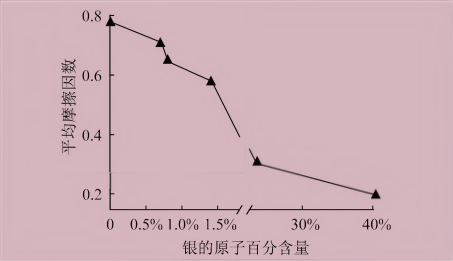
Figure 5 Average friction coefficient of titanium nitride silver thin films with different silver contents
The wear values of titanium nitride silver films with different silver contents are shown in Figure 6. From Figure 6, it can be seen that the wear value of titanium nitride silver film decreases first and then increases with the increase of silver content, when the atomic percentage of silver is 0 At 8%, the wear value of titanium silver nitride film is the smallest.
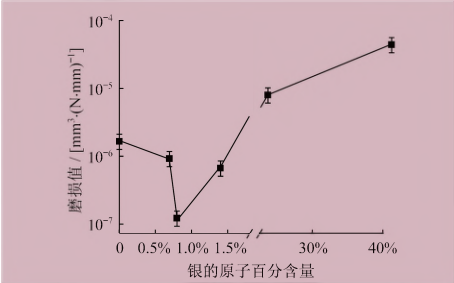
Figure 6 Wear values of titanium nitride silver films with different silver contents
7 Conclusion
Titanium nitride thin film has high hardness, wear resistance, heat resistance, corrosion resistance and other characteristics, and is widely used as a hard film in advanced coated cutting tools. The film layer has developed from a single thin film to a multi-layer thin film, composite thin film, and gradient thin film. The preparation technology of hard films is becoming increasingly mature, and the control of film thickness, composition, and performance is becoming more precise. The composite of titanium nitride and other thin films into nano multilayer films significantly improves the hardness, wear resistance, fracture toughness, high-temperature thermal stability, and corrosion resistance of the films, and has broad prospects in industrial applications. At present, the mechanical properties of multilayer films are still in the exploratory stage, and while achieving certain results, there are still some problems. For complex multilayer films, the existing superhard mechanisms cannot fully explain their hardness changes, and there is still a gap between theoretical explanations and research results on multilayer films. Suggest using theoretical analysis feedback to guide the production of multi-layer thin films and predict the amount of hardness improvement. The residual stress of titanium nitride nano multilayer films has an impact on wear resistance, and the research on the influencing mechanism is not comprehensive enough. It is necessary to comprehensively consider the influence of residual stress on defect nucleation, growth, and crack propagation.

